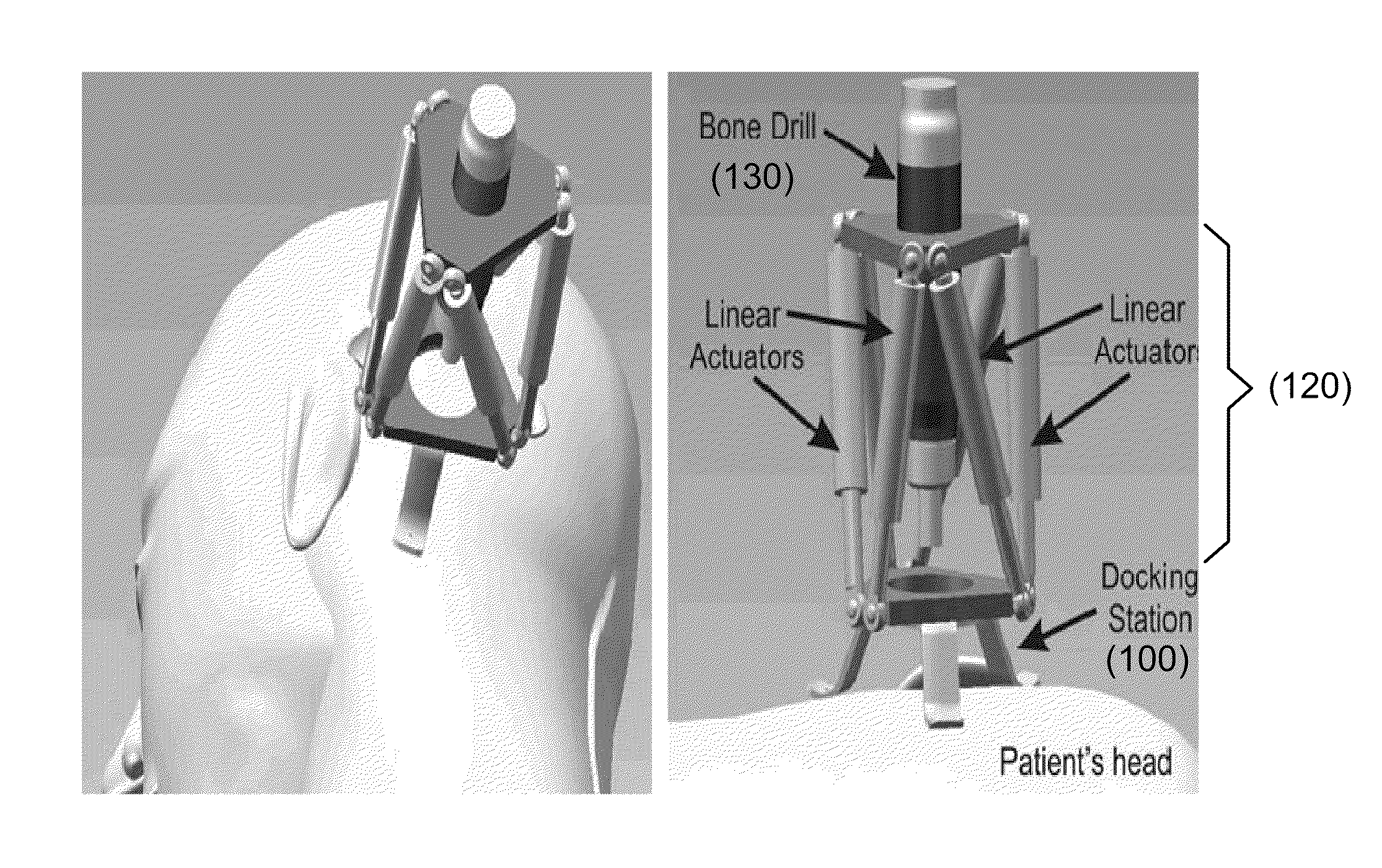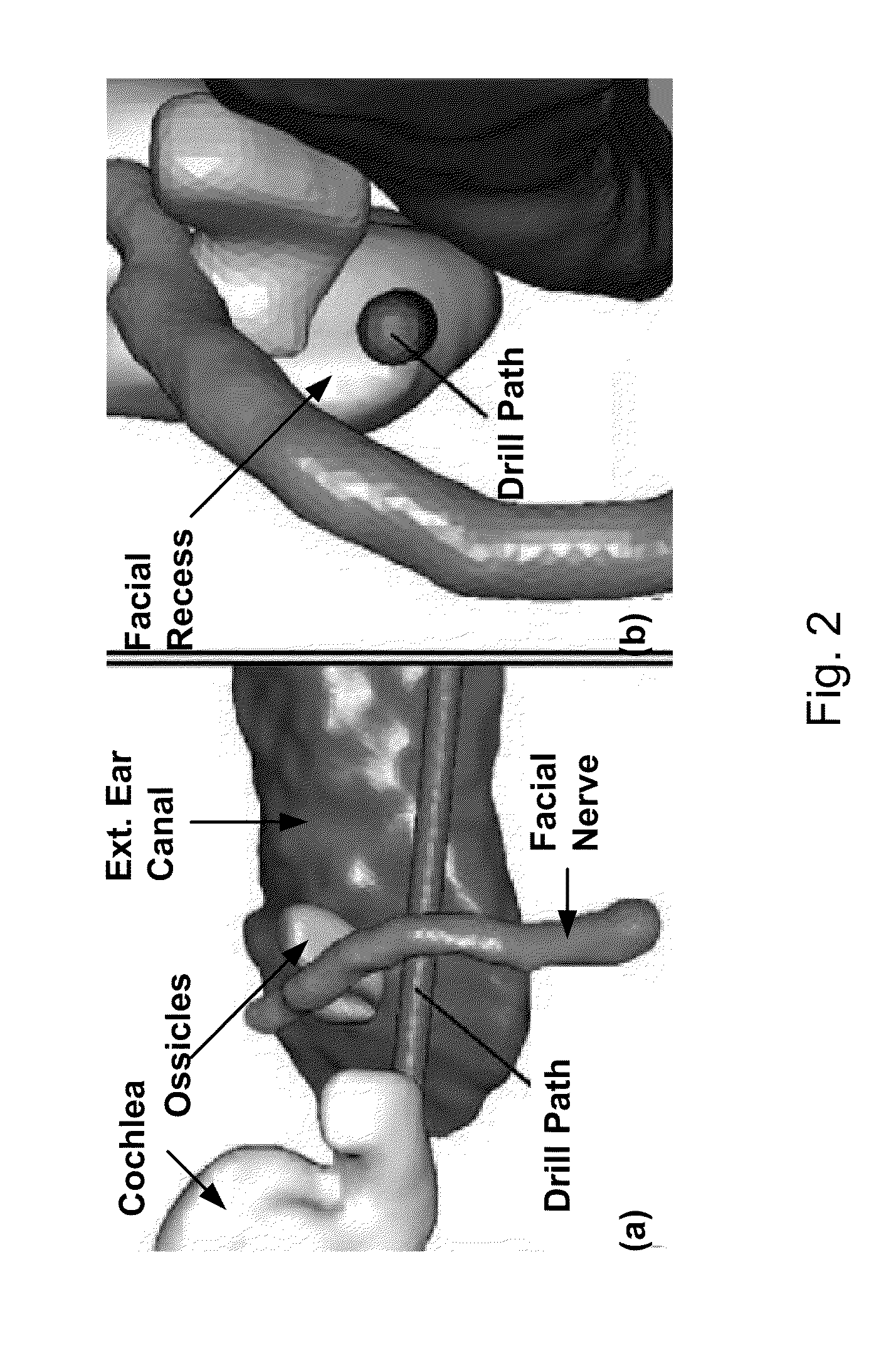Apparatus and methods for percutaneous cochlear implantation
- Summary
- Abstract
- Description
- Claims
- Application Information
AI Technical Summary
Benefits of technology
Problems solved by technology
Method used
Image
Examples
example 1
[0078]FIG. 4 shows an AIM frame attached to a human skull according to one embodiment of the present invention. The AIM frame has a rigid pre-positioning frame, also referred herein as a docking frame, that is mounted to the skull with surgical screws, a robot that attaches to titanium spheres on the pre-positioning frame, and an electronic equipment enclosure. The robot has a top platform and a bottom platform. Both the base platform of the robot and the pre-positioning frame have large holes through their centers to allow the surgical tools (drill and cochlear implant insertion tool) to pass through to the target.
[0079]Both the top platform and base platform of the AIM frame are milled from polyetherimide, an autoclavable thermoplastic that maintains high rigidity and tensile strength at high temperatures. The joints and all fasteners are made of autoclavable metals. The pre-positioning frame is made from an autoclavable polyetherimide or acrylonitrile butadiene styrene (ABS). It ...
example 2
[0091]FIG. 10 shows schematically (a) a mechatronic microtable attached to a human skull, and (b) a close-up view of the mechatronic microtable, according to another embodiment of the present invention. The mechatronic microtable comprises a docking frame 100 and a parallel robot 120 mounted on the docking frame 100. The top plate of the parallel robot 120 receives a surgical tool 130 such as a bone drill. Design objectives for the parallel robot are summarized in Table 1.
[0092]FIG. 11 shows schematically in part the docking frame 100. Fiducial anchors 102 pass through holes in the docking frame 100 through incisions in the skin 108 and then self-tap into the bone 110. A retaining clip 106 is then slid into one of several grooves in the lower part of each of the fiducial anchors 102, and a nut 104 is tightened. The retaining clip 106 avoids using the pliable skin as platform for the docking frame 100. The top portion of the fiducial anchor 102 is a hexagonal part that serves both to...
PUM
 Login to View More
Login to View More Abstract
Description
Claims
Application Information
 Login to View More
Login to View More - Generate Ideas
- Intellectual Property
- Life Sciences
- Materials
- Tech Scout
- Unparalleled Data Quality
- Higher Quality Content
- 60% Fewer Hallucinations
Browse by: Latest US Patents, China's latest patents, Technical Efficacy Thesaurus, Application Domain, Technology Topic, Popular Technical Reports.
© 2025 PatSnap. All rights reserved.Legal|Privacy policy|Modern Slavery Act Transparency Statement|Sitemap|About US| Contact US: help@patsnap.com



